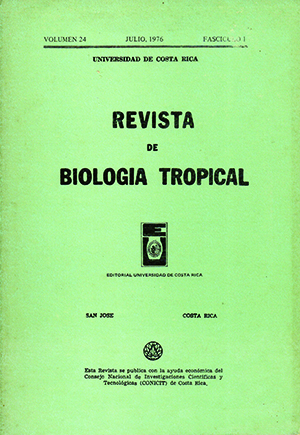Abstract
To determine the reproductive potential of adult Trichinella spiralis males and females, Swiss mice were inoculated orally with known numbers of male and female larvae. Five or 6 weeks after inoculations the mice were killed and the larvae present in the diaphragm and in the pepsin digests of the carcass were counted. Diaphragms of all infected mice contained larvae. Inocula consisting of 1 male and 1 female produced from 274 to 1,094 larvae; 1 female and 10 males from 433 to 2,158 larvae; 1 male and 10 females from 1,240 to 3,162 larvae. Forty-eight-hour-old T. spiralis females transplanted into normal mice, one female per mouse, produced from 19 to 283 larvae; transplanted 96-hour-old females produced from 265 to 863 larvae. Up to three inseminated females were recovered on the 6th day of infection from the intestine of mice inoculated with 10 female and I male larvae. These results indicate that a male can produce sufficient sperm to fertilize approximately 3,200 oocytes, or more, and can inseminate more than one female; a female can produce approximately 2,200 oocytes, or more. Furthermore, they suggest that multiple inseminations may occur during the course of infection. Presence or absence of larvae in the diaphragm of a mouse can be used as an absolute criterion to confirm or rule out infection with T. spiralis.
References
Campbell, W. C., & J. J. Yakstis 1969. Mating success and fecundity of pairs of Trichinella larvae administered to mice. Wiad. Parazytol., 15: 526-532.
Chirasak, K. 1971. Output of larvae and life span of Trichinella spiralis in relation to worm burden and superinfcction in the mouse. Parasitology, 57: 289-297.
Doerr, R., & E. Menzi 1933. Studien über den Mechanismus der Trichinelleninfektion. VIII. Mitteilung: Vergleichende Unterscuchungen über die Empfiinglichkeit der Ratte und des Meerschweinchcns für die Infektion per os. Centralblatt für Bakteriologic Originale, 128: 177-188.
Edney, J. M., F. Arbogast, & J. Stepp 1953. Productivity in gravid Trichinella spiralis (Owen, 1835) transplanted into laboratory rats. Tennessee Acad. Sci, 28: 62-68.
Kozek, W. J. 1971. The molling pattern in Trichinella spiralis. I. A. light microscope study. J. Parasit., 57: 1015-1028.
Kozek, W. J. 1975. Trichinella spiralis: morphological characteristics of male and female intestine-infecting larvae. Exp. Parasitol. (in press).
Mato ff, K., & M. Wapzarowa 1937. Wieviel Jungtrichincllen Kann cine wcibliche Darmtrichinelle gebiiren? 2. InfektKr. Haustiere, 51: 89-98.
Nolf, L. O. 1937. Thc transplantation of gravid Trichinella spiralis. Parasitology., 23: 574 (Abstr.)
Shanta, C. S., & E. Meerovitch 1967. The life cycle of Trichinella spiralis. I. the intestinal phase of development. J. 2001, 45: 1255-1260.
Thomas, H. 1965. Beitrage zur Biologie und mikroskopischen Anatomic von Trichinella spiralis Owen, 1835. 2. Tropenmed. Parasit, 16: 148-180.
Wu, L. -Y., & A. A. Kingscote. 1957. Studies on Trichillella spiralis. II. Times of final moult, spermatozoa formation, ovulation and inscmination. Canad. 2001, 35: 207-211.
##plugins.facebook.comentarios##

This work is licensed under a Creative Commons Attribution 4.0 International License.
Copyright (c) 1976 Revista de Biología Tropical


